With the rain increasing in intensity, I gave my mare, Natalie, her head as she picked her way across the steep, slick and rocky mountainside, bent on catching 25 recalcitrant cattle that clambered high above us near the peak of the volcanic dome. They had cut from the main herd, in search of what God only knew as the rain ratcheted up a few notches with wind that coursed in waves across the grassland below. I buttoned my canvas-oilcloth slicker coat tight around my neck over two silk scarves to lock in body heat and repositioned the long tail of the duster over the cantle (or seatback) of my saddle. Even if it poured rain, at least my butt would be dry. Being proactive about clothing and heat conservation is truly a matter of life and death in the mountains. I have been through several bouts of hypothermia, and near death from exposure on several occasions.
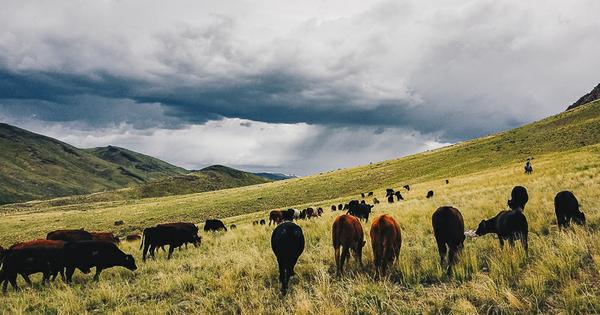
I looked down at Renae, several hundred feet below me, astride quarter horse George. I shouted across the wind and curtain of rain. “You ain’t afraid of heights, are you Renae?”
She looked up at me, paused for a moment, and shouted over the wind: “Not anymore!”
I ventured a thought to her: “I bet your people back home in Indiana really have no concept that cattle can live and thrive in country like this.” She is from a part of the country where corn is king, and cattle are fed it. In feedlots. No adventuring for them in search of wild plant diversity.
She looked back up to me and sadly shook her head. “They have no idea.”
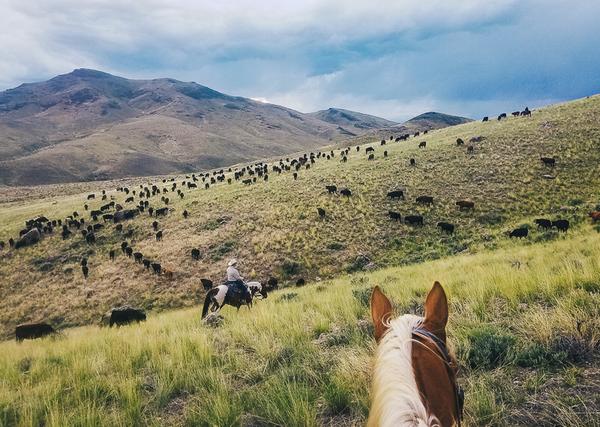
I turned my mare back to the object at hand and climbed up to where the Angus cattle had their heads down, grazing voraciously at what they discovered among the rocks. As I rode up the rock face, Natalie carefully placing her feet on rocks that would not slide, I pulled up to within 4 feet of a steer ripping at the green that had emerged from the lichen encrusted rocks.
In that second, I understood why they had ventured up here through ledge and lichen: the Salmon River Wildrye, Leymus ambiguus var. salmonis. They love this plant for its easy edibility and wildly sweet flavor. It’s a native grass that grows only within a 15-mile radius of the Salmon River Canyon, and nowhere else in the world. An added bonus: it’s unusually beautiful, with its blue green foliage, soft velvety leaves and proud flag waving inflorescence.
But it was going to get dark soon, and if the snow came down to our level, things would get treacherous underfoot. Renae and I redoubled our gathering efforts and got them started on the thin and sinuous wild elk trail that led off the peak.
That was two days ago. Now, with the arrival of June, I think the rain might be over for a bit; we’ve been having it on and off for nearly three weeks. This morning dawned crystal clear with a touch of night frost. The azure canopy of sky is bounded by a horizon of snow dusted peaks, now lit by the rising sun. In the early morning light, I bid my cowhand crew a good day as they gathered their horses for their ride in the foothills of those very mountains capped by yesterday’s new snow.
I’m a little relieved not to have to ride today. Ten to twelve hours horseback can wear on my 56-year-old body, especially when I’m a little green bottomed from spending the winter pretty much out of the saddle. But those middle-aged muscles will harden up for another year; like the horses, we humans have to get conditioned to life on the range. I don’t know how the cows do it. The 300 head we have up there don’t seem to mind the mountains a bit; I think it’s because of the lack of fences and plethora of plants to check out. They appear to be invigorated.
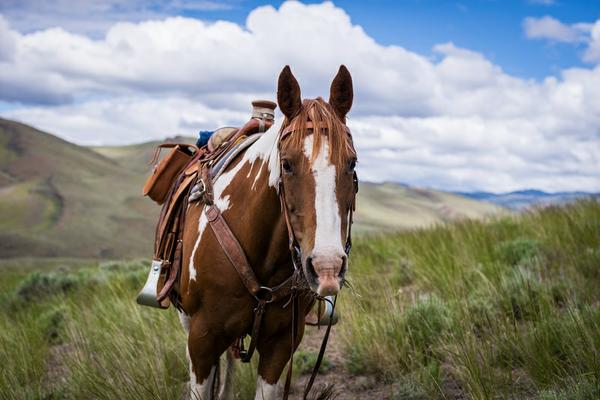 Our summer crew is on the fast track to getting conditioned with the realities of range riding. I rode long days horseback herding cattle with all of our new crew members last week. There is Georgia from New Jersey, Renae from Indiana, Sarah from California, Sky from Montana, Ben from Washington, and Jeremiah from Idaho. They all bring different skills and knowledge to the table so that we can build 3-person crews with the diversity of talent needed to care for the beeves in a wilderness setting for the summer. Out of 55 applicants, these 6 college students rose to the top in attitude, grit and knowledge.
Our summer crew is on the fast track to getting conditioned with the realities of range riding. I rode long days horseback herding cattle with all of our new crew members last week. There is Georgia from New Jersey, Renae from Indiana, Sarah from California, Sky from Montana, Ben from Washington, and Jeremiah from Idaho. They all bring different skills and knowledge to the table so that we can build 3-person crews with the diversity of talent needed to care for the beeves in a wilderness setting for the summer. Out of 55 applicants, these 6 college students rose to the top in attitude, grit and knowledge.
I think grit is the most important part of it; it will be the thing that they have to call on at least several times in the wilderness when nature requires their deepest resolve to persist for the sake of themselves or their charges.
“Was this a typical day on the range?” Ben from Washington wanted to know. It was near dark as we loaded horses into the stock trailer for the bumpy ride out.
I could detect the dim light smile under the broad brimmed buckaroo hat worn by crew boss returnee Anthony. “Yes. I mean-they aren’t all like this, but adversity rears its ugly head quite often.”
The crew that day had been exposed to intermittent bone chilling rain, gusts of gale-like wind, near strikes of lightning bolts in wide open country, and the accompanying explosive bursts of thunder (one mare nearly left her skin behind as she launched in the air at that one). The new-to-herding beeves had gotten spread out over nearly a mile of broken country, and the crew was way out of shouting distance as the beeves began to line out for their protected night ground in the thick cottonwood forests along the river. It meant that Ben, alone up front, had to guide them into the one place off the cliffs along the rapidly moving torrent of the river before it got dark. 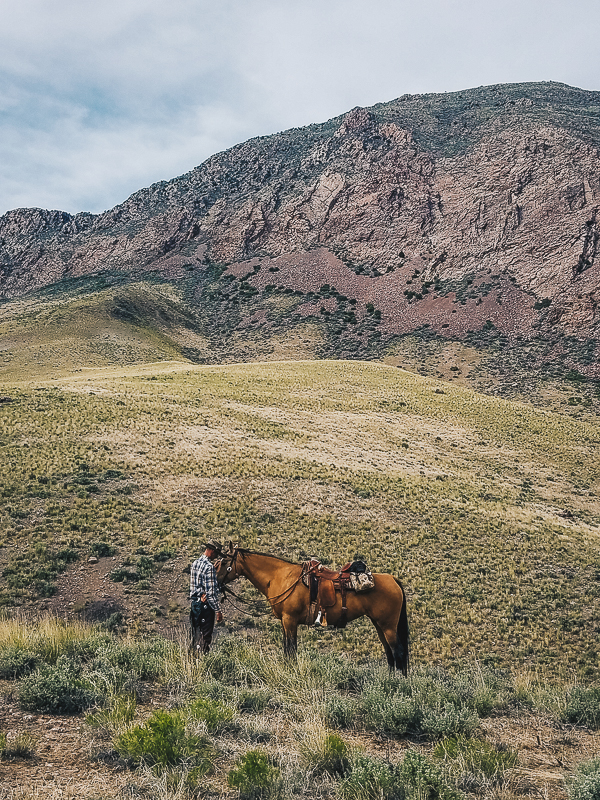
If they fell off the cliffs, they would likely survive, but could end up miles downstream before they got their feet under them. The big canyon rapids just below the night bedding ground could end up being pretty hard on a steer.
The second we saw something was running amok, Anthony and I pressed heels to horse and went as fast as we dared down toward the river where we took in the would-be debacle. I could see Ben’s soaked palm leaf cowboy hat bobbing up and down with the backdrop of the boiling river along the edge of the cliffs, with a foreground of 300 black Angus yearlings trying to push by him to the edge of the brink. I knew by experience that too much crowd pressure was like that of a rock concert: the ones in the lead would be forced off their footing and would fall off the vertical cliff into the snowmelt torrent below.
Anthony and I cut around the herd, moving fast with a surefooted trot along the top of the cliff, hazing the mob away, and back uphill. Now, a whole segment of the bunch was moving off to a new, more broken rocky break above river bottom forest. I yelled to Ben: “Ben, cut over toward the trees, and keep them from dropping down there!”
And so he did. He ran back and forth, waving a cottonwood branch from below, turning the few that had started to pick their way down on narrow trails, yelling to get their attention to stop them before they continued their descent.
It was not the quiet stockmanship I like and try to always encourage in my crew and practice, but the hazing tactics were effective in getting their attention and stopping the mob. I would have done the same thing. Slowly, the herd turned toward the correct and safe way down off the cliffs to the river bottom forest below.
My mare, Natalie, was heaving below me. It was over. Now, we quietly bedded down the herd in the dark forest bottoms for the night. It was cool and out of the wind here. The only sounds were the river rushing by and fat drops of rainwater dripping from the treetops over the deep grass and duff. Here, the beeves would be safe, and we could ride again tomorrow to bring them up to the best grass.
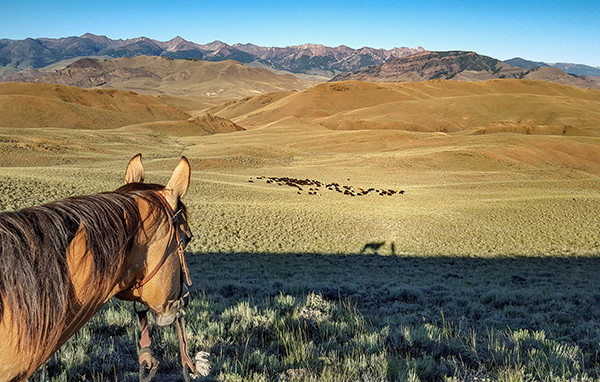 In answer to Ben’s question, well, no, it’s not always like this. But typical is the day where nature, cattle and horses speak lessons to us about how to handcraft our wild protein better. Up here, we travel an interminable trail of learning opportunity. Unfortunately, I can’t say I’ll ever be an expert; I’ll always be a student. I just must remember to listen.
In answer to Ben’s question, well, no, it’s not always like this. But typical is the day where nature, cattle and horses speak lessons to us about how to handcraft our wild protein better. Up here, we travel an interminable trail of learning opportunity. Unfortunately, I can’t say I’ll ever be an expert; I’ll always be a student. I just must remember to listen.
Thanks for being part of our journey. Without you, we couldn’t raise this perfect protein. Your discriminate search for wellness and flavor has led you here and perpetuates our vision: that of providing unparalleled flavor and wellness to our partners while practicing husbandry with our animals on regenerating wild and pristine landscapes.
Happy Trails.
Glenn, Caryl, Cowhands and Girls at Alderspring.

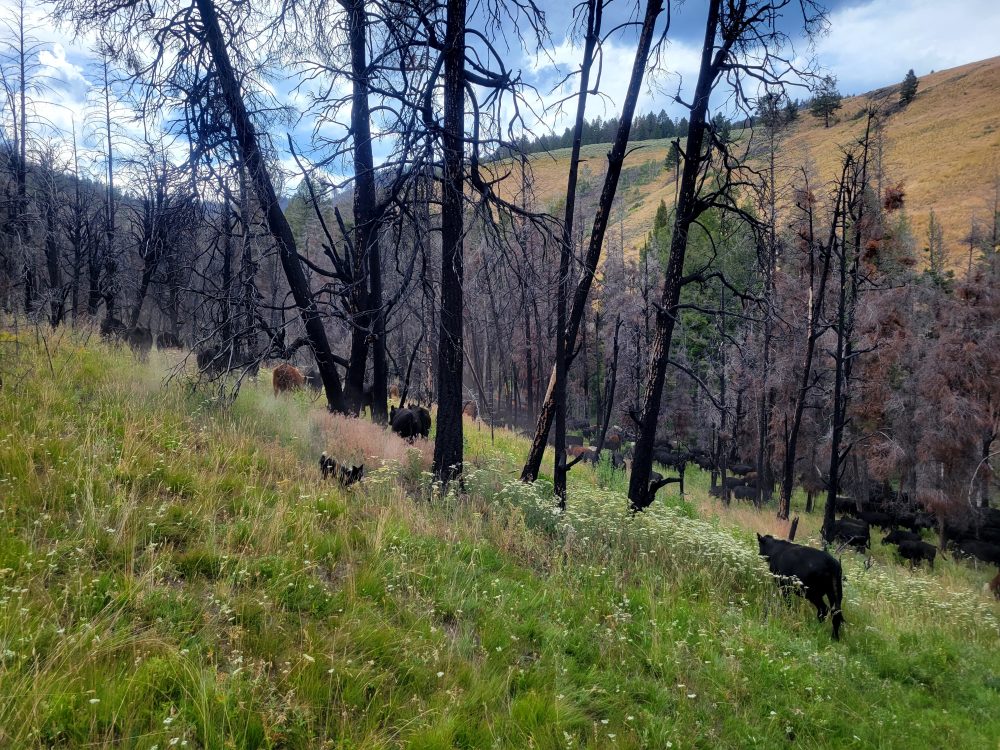




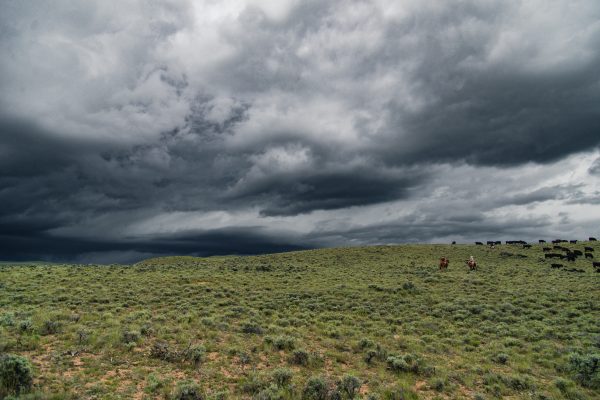
Leave a Reply